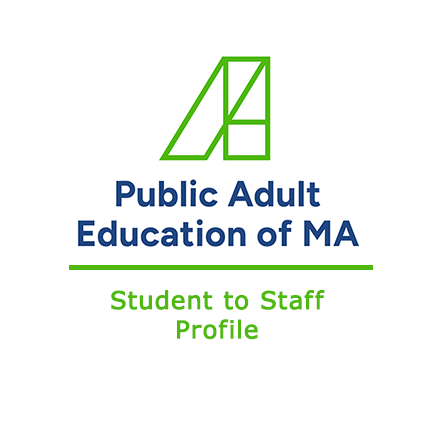
How many adult educators have heard students ask, “When will I ever use this math in my life?”
My guess is that the likelihood is quite high. Many of us may have uttered that question ourselves at some point in our math learning. This question hints at the disconnect between what students experience of math inside the classroom (virtually or in person) and what they encounter beyond that scholastic space. Yet, a slight twist on that familiar question bridges the distance between those lived experiences.
Consider how students might respond if instead they were asked to reflect on this question:
Where is MY life in the math that I study?
This question appears at the end of the Celebrating the Diversity of Mathematical Minds workshop and was posited by Mark Trushkowsky. Mark was inspired by a similar question posed on an end-of-semester evaluation by fellow Adult Numeracy Network (ANN) member Amy Vickers who asked, "Where did you see your culture in this class?" Upon reading Amy’s question, Mark wondered, “What could any of our students say if we asked them that? What can our imagined answers teach us about improving our own practice?” The question above came from Mark's wonderings. It is a great first step in making math more inclusive.
Math should invite us all to the table.
If you wonder how one question can make a difference in our math instruction, imagine a subject you enjoyed in school more than any other and why. Did it involve a great teacher? A fun group of friends? Learning opportunities that were engaging and presented opportunities to go beyond memorization? A chance to express yourself, your interests, or your passions? Did it give you space to show your creative side, to collaborate with others, or to try (and sometimes fail) and still persevere? Any one of these reasons could be enough to turn a typical school subject into a positive memory that still lives in you today.
Imagine how our adult learners would respond to the same questions about the classes they take with us today. Are we doing all we can to create those kinds of experiences where math means more than something that stands in the way of earning an HSE?
How different might our students respond to math if they were asked to share even a fraction of their life with the math we teach them? It takes only an invitation from us to create space for their lives in our lessons, in our classrooms, and in our instructional practices. Yet, it begins with our recognition that not everyone has an equal voice and representation in the math we teach.
Whose voice is missing? Whose life is unseen in the math we teach?
To help us better understand the impact of adding more voices and more lives into our math instruction, I will share with you a quote from Dr. Carol Anderson. Dr. Anderson is the Charles Howard Candler Professor and Chair of African American Studies at Emory University in Atlanta, GA. This quote comes from Facing Today: A Facing History blog. Dr. Anderson states:
…[W]hat voter suppression does in silencing American citizens is that it creates a choir where we only have sopranos. Imagine only sopranos singing for years. You have a very limited playbook, and it leaves everybody else out. But imagine now, having a choir with baritones, and altos, and tenors, and basses, and the sopranos. Now you've got a rich, vibrant sound and you've got a music book that has an array of songs that all can sing. That’s a very different kind of America and that is where we need to get to."
Dr. Anderson’s words are included as part of the Celebrating the Diversity of Mathematical Minds workshop. Pam Meader, one of the workshop creators, has said, “While Dr. Carol Anderson talks about voter suppression, I feel her words also illuminate the need to expand cultural connections in our math classes as well.”
Make space to hear about the lives of your students behind the math.
So, where do you see yourself in this math? Are the examples and scenarios reflections of your life and things you know well, things that ring true for your lived experiences? Are you only hearing about one culture, one type of household, one kind of wealth, one race, one religion, one language, one type of citizen, one type of family, one understanding of ability, or one kind of freedom?
If what you see is limited or incomplete representation, then there are more voices still to be heard and more lived experiences still to be invited into our math lessons and our math instruction.
For ideas and examples, you need only have your students respond to the question: Where is my life in the math that I study? Then listen and take note of the rich, vibrant sounds of their lives that become a math book with an array of real-world math problems that all can explore together.
As always, please know that you are not alone on your math journey. The SABES Math Center is here to help YOU, so please contact us (heidi_schuler-jones@terc.edu) should you need math teaching support or inspiration. We welcome your questions, PD requests, ideas, and individual coaching needs.


